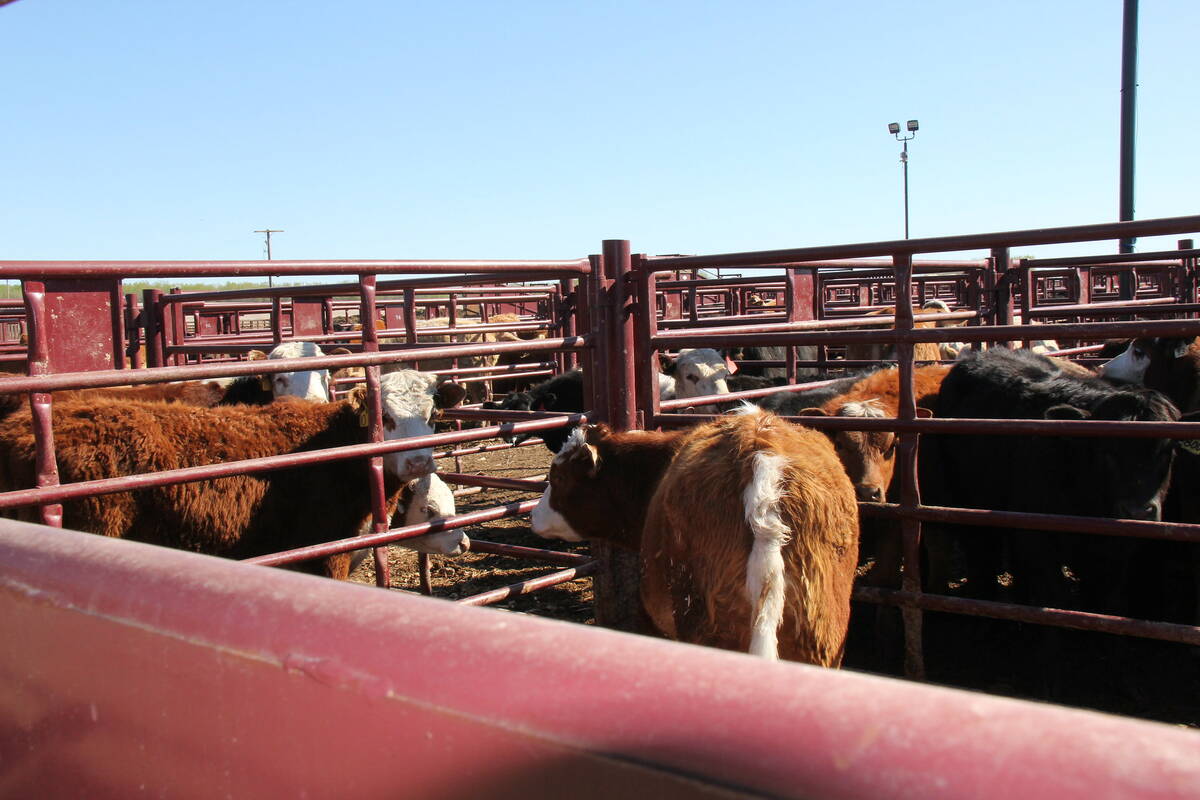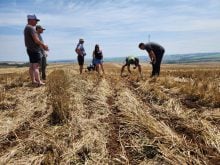Dry weather on the Prairies has reduced canola yields dramatically, but it also took a toll on the canola disease clubroot.
In Leduc County, one of the areas of Alberta hardest hit by clubroot, only eight new positive cases have been identified out of 720 fields surveyed this year. Thirty positive fields were identified in 2008 and 70 in 2007.
The small number of canola fields showing sign of the soil borne disease doesn’t mean it has disappeared from the fields, said Garrett Broadbent, director of agricultural services with Leduc County.
Read Also

Livestock movement scanner looks for proving ground
The Canadian Cattle Identification Agency (CCIA) will test new technology intended to simplify the recording of animal movements, linked to proposed federal livestock traceability regulations.
“Once you have a heavy spore load, there’s billions and billions of microscopic spores still in the field.”
In years with more moisture, clubroot galls begin appearing on canola roots in late July. This year only small galls began appearing at the end of August.
“Dry conditions don’t reduce the spread of it, but the infection level will be less,” Broadbent said.
Clubroot is spread by contaminated soil carrying the spores, likely on machinery moving between fields. Spores can last in fields up to 20 years, reducing yield on infected canola fields by half.
The Alberta government declared clubroot a pest in 2007. Depending on local municipal and county regulations, canola cannot be grown on an infected field for five to seven years.
Broadbent said this year’s dry conditions likely helped reduce the spread of the disease because not as much mud clung to machinery when it was moved between fields.
County officials have encouraged farmers to wash their equipment, or at least knock the largest chunks of mud off tractors and seeding equipment to help reduce the spread, but Broadbent isn’t sure how many farmers have followed the advice.
“I think only a small percentage of farmers are actually doing it.”
Murray Hartman, an oilseeds specialist with Alberta Agriculture, said most farmers are aware of the disease and how it’s spread, but few have adopted the task of cleaning equipment between fields.
“There are different philosophies out there. Some are lackadaisical and still think they can grow canola every two years and others don’t want anyone even coming on their fields,” Hartman said.
“Most farmers are concerned but are not panicking. Not many have extended their rotations. They’re still carrying on as usual and waiting for resistant varieties and doing very
little cleaning.”
Hartman said he talked to one producer who spent seven hours cleaning his equipment between fields, but only once. He was not willing to spend valuable seeding time cleaning equipment.
“There have been successes, but there have been disappointments.”
Broadbent said seismic and oil and gas companies that cross farmers’ fields have educated staff about cleaning equipment, especially in clubroot infested areas near Edmonton.
“From the onset, the industry has been involved and have put procedures in place to ensure cleaning procedures are in place when in clubroot infected areas.”’
Brent Hoyland, an agriculture fieldman with Flagstaff County, said the dry year has reduced the amount of new infection in the central Alberta county, but it doesn’t mean farmers should be less vigilant.
“They have to be vigilant about the spread of soil and trash between fields,” he said.
Since 2006, three fields in Flagstaff County have tested positive out of 300 that were checked.
Hoyland said there is a discrepancy between what farmers expect energy companies to do when they cross their land and what they do themselves.
The county said it has informed farmers of the risks and the best ways to reduce the disease, but in the end it’s up to farmers to implement their own standards.
“It’s whatever risk they want to assume.”
Broadbent said many producers are waiting for plant breeders to offer clubroot tolerant varieties of canola.
Pioneer Hi-Bred had limited quantities of 45H29 Hybrid canola for sale this year for farmers in heavily infested areas.
Last week Monsanto Canada applied for emergency registration of its clubroot tolerant hybrid canola, a Dekalb series 73. If the company receives a favourable ruling and has a good winter seed growing season, it hopes to have canola available by next spring.
“We are very committed to applying our technology to find a solution,” said Monsanto communications manager Trish Jordan.
She said clubroot tolerant canola doesn’t mean farmers can ignore good farming practices or stop following the recommended four year canola rotations.
“Good stewardship practices are the number one thing growers can do to ensure these sorts of things don’t happen.”
Broadbent said clubroot resistant canola is only a tool and will likely lose its resistance if grown continually on clubroot-infected fields.
The county plans to hold more clubroot management campaigns later this fall to reinforce the need for farmers to be vigilant and maintain long rotations between canola crops.
“These spore loads are high and this disease will not go away.”
Igor Falak, a research scientist with Pioneer Hi-Bred, said clubroot-tolerant canola was planted in limited fields and test plots, but it showed outstanding results and not just in clubroot-infested fields.
“Agronomically, it looks like it’s going to be one of our top yielding hybrids,” he said.
With only a million acres potentially infested with clubroot, the hybrid is designed for use across the Prairies.
“It has delivered very good performance in heavily infested fields.”
Falak said three hybrids with clubroot tolerance will be available for full registration next year.














